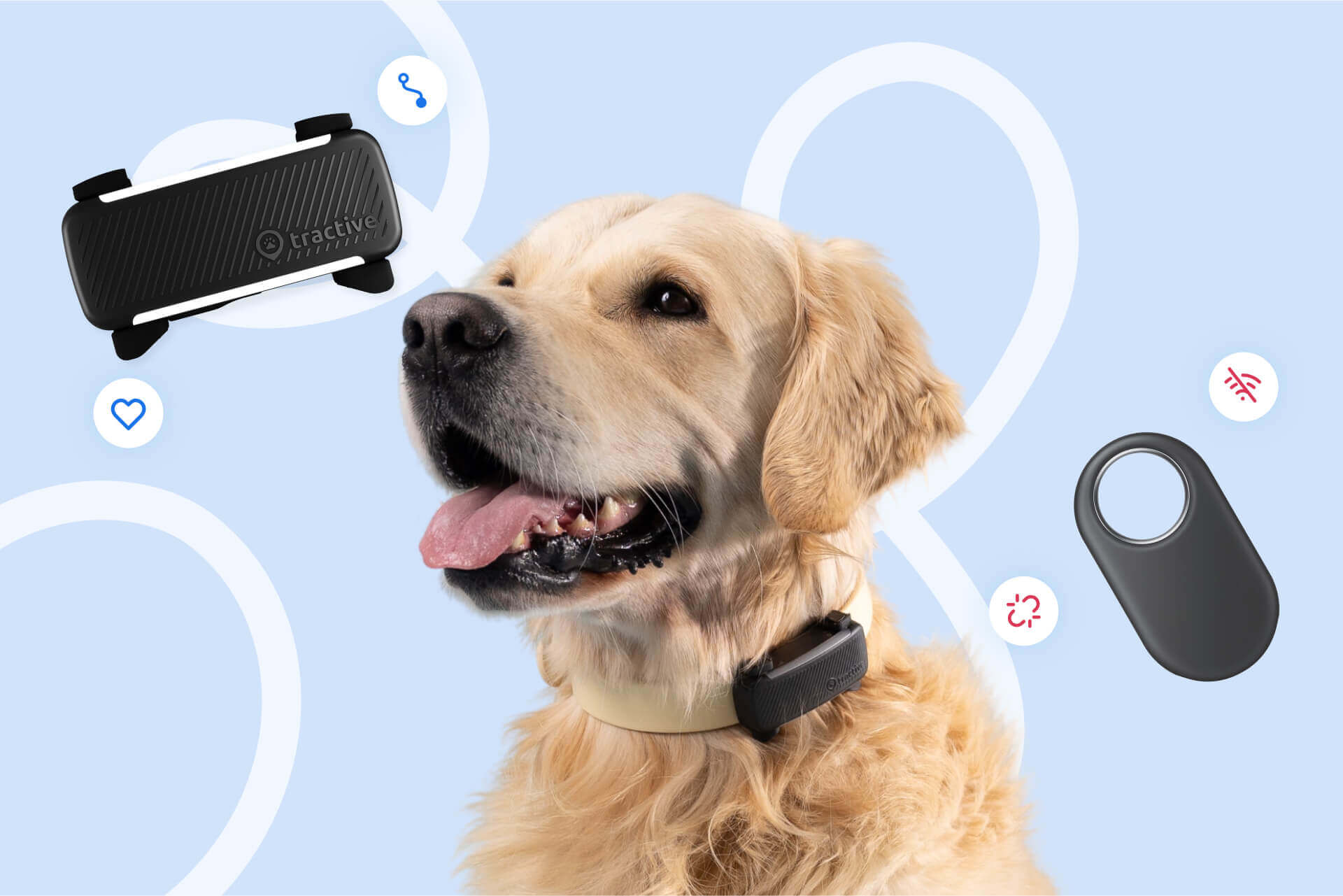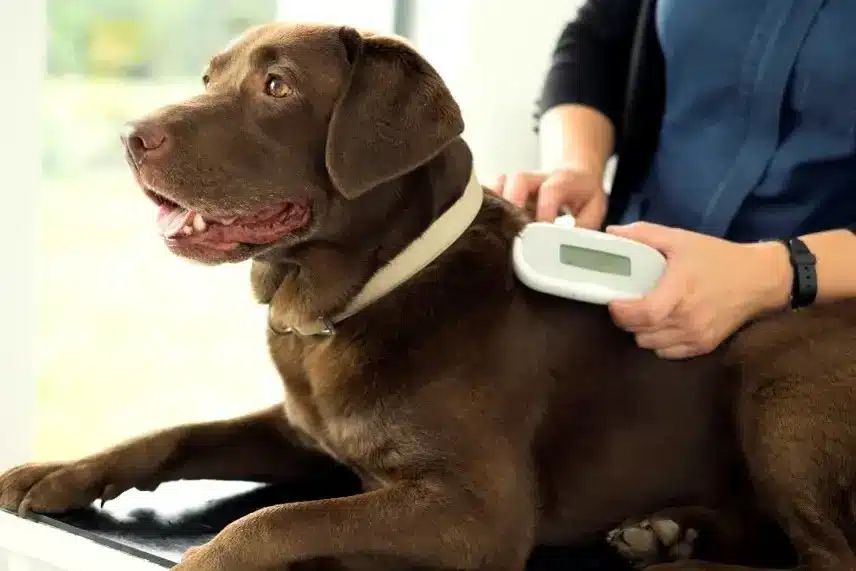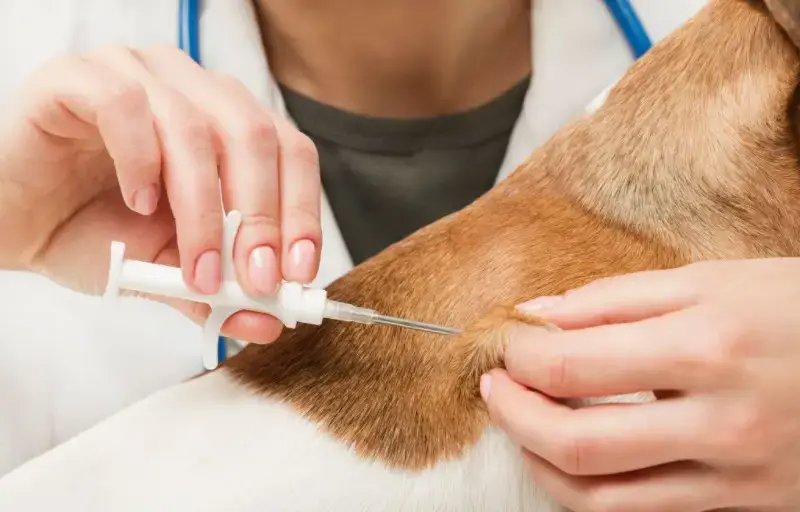Losing your dog is every pet owner’s worst nightmare. But what if you could always know where your furry friend is, no matter what?
Tracking your dog with a chip is a simple and reliable way to keep them safe. You’ll discover exactly how this tiny device works and how it can give you peace of mind. Keep reading to learn the easy steps you can take right now to protect your best friend.
Microchipping Basics
Understanding the basics of microchipping is essential if you want to keep your dog safe and easily traceable. A microchip offers a reliable way to identify your pet, especially in situations where collars or tags might get lost. Let’s dive into what a dog microchip is, how it works, and why it’s a smart choice for every pet owner.
What Is A Dog Microchip
A dog microchip is a small, rice-sized device implanted under your dog’s skin, usually between the shoulder blades. It contains a unique identification number linked to your contact information in a database.
It’s important to know that the microchip itself doesn’t track your dog’s location. Instead, it acts like an ID card that shelters or vets can scan to find your details and reunite you with your pet.
How Microchips Work
The microchip uses radio-frequency identification (RFID) technology. When a scanner passes over the chip, it activates the chip to transmit its unique ID number.
This number is checked against a registry database to retrieve your contact information. The process takes just a few seconds but can make a huge difference in getting your dog home quickly.
Benefits Of Microchipping
- Permanent Identification:Unlike collars, microchips can’t fall off or be removed easily.
- Increased Chance of Recovery:Shelters and vets routinely scan lost dogs for microchips.
- Proof of Ownership:The chip links your dog legally to you, which can help resolve disputes.
- Peace of Mind:Knowing your dog has a permanent ID lets you feel safer when they’re out of sight.
Have you ever wondered how many lost dogs never make it back because they lacked a permanent ID? A microchip could be the difference in those critical moments.

Credit: tractive.com
Getting Your Dog Microchipped
Getting your dog microchipped is a simple and effective way to keep them safe. A microchip helps identify your pet if they ever get lost. It is a small device placed under your dog’s skin. This section explains where to get a microchip, what happens during the procedure, and the costs and safety of microchipping.
Where To Get A Microchip
Most veterinarians offer microchipping services. Animal shelters and pet adoption centers can also implant chips. Some pet stores provide microchipping events. Choose a reliable place with trained staff. Ensure they register the chip in a national pet database.
The Microchipping Procedure
The procedure takes only a few minutes. The vet cleans a small area on your dog’s neck or shoulder. They insert the microchip with a quick, painless injection. No anesthesia is needed. After the chip is inserted, the vet scans it to confirm placement. The chip stays under the skin for your dog’s life.
Costs And Safety
Microchipping costs range from $25 to $50. Prices depend on location and provider. The procedure is safe with minimal risks. Some dogs may feel slight discomfort during injection. Serious side effects are very rare. Microchips use passive radio-frequency identification (RFID). They have no batteries and do not affect your dog’s health.
Registering Your Dog’s Chip
Registering your dog’s microchip is the crucial step that connects your pet to you in any lost-and-found situation. Without registration, the chip is just a number without meaning. Ensuring your contact details are linked to that number gives you peace of mind, knowing someone can reach you if your dog is found.
Choosing A Registration Database
Not all microchip databases are the same. Some are managed by pet organizations, others by government agencies or private companies. It’s important to pick a database that is widely recognized and easily accessible by shelters and vets in your area.
Many databases allow you to register your dog for free, but some may charge a small fee for added services like SMS alerts. You might want to check if your vet or local animal shelter recommends a specific database. Have you thought about which database shelters near you rely on?
How To Register The Chip
Once your dog has a microchip implanted, registering it is usually straightforward. You’ll need the microchip number, which your vet provides, along with your contact information and your dog’s details.
Registration can often be done online, over the phone, or via mail. Some databases send a confirmation email or letter—keep this for your records. If you’ve ever struggled to fill out online forms, you’ll appreciate how quick and simple this process can be.
Updating Your Contact Information
People move, change phone numbers, and update emails. If your contact info isn’t current in the database, you could miss crucial calls. It’s easy to forget this step until it’s too late.
Make a habit of checking your microchip registration details at least once a year. Most databases provide a login portal or phone support for updates. Would you want your dog to wait days just because of outdated contact information?

Credit: peeva.co
Tracking Your Dog With A Microchip
Tracking your dog with a microchip offers a reliable way to reunite lost pets with their owners. A microchip is a small device implanted under your dog’s skin. It stores a unique ID number linked to your contact details in a central database. This technology helps shelters and vets identify your dog quickly.
How Vets And Shelters Scan Chips
Vets and animal shelters use a special scanner to find microchips. The scanner sends a low radio signal to the chip. The chip then sends back the ID number stored inside it. Staff enter this number into a database to find the owner’s contact information. This process is fast and painless for your dog.
What To Do If Your Dog Goes Missing
Start by informing local vets and animal shelters about your missing dog. Provide them with your dog’s microchip ID and description. Visit shelters regularly to check if your dog has been brought in. Share your dog’s photo and details on social media and community boards. Keep your contact information up to date in the microchip registry.
Tips For Quick Recovery
- Act quickly and search the neighborhood thoroughly.
- Leave familiar items like your dog’s bedding outside.
- Talk to neighbors and local businesses for help.
- Use flyers with clear photos and your contact details.
- Contact local shelters daily for updates.
- Update your microchip details regularly to avoid delays.
Additional Tracking Tools
Tracking your dog with a microchip is a reliable way to reunite if they get lost. However, microchips alone don’t provide real-time location updates. Adding other tracking tools can give you peace of mind and improve your chances of finding your pet quickly.
Gps Trackers And Collars
GPS trackers are devices you attach to your dog’s collar that send live location data to your phone. These gadgets use satellite signals to pinpoint your pet’s exact position, even if they wander far from home.
Many GPS collars come with features like geofencing alerts. You get notified the moment your dog leaves a safe zone. This instant update lets you act fast before your dog travels too far.
Think about how it feels when your dog runs off during a walk. Having a GPS tracker means you don’t have to panic or search endlessly. You can see their movements in real time and head straight to their location.
Combining Microchips With Other Methods
Microchips work great for identification but don’t track movement. Pairing a microchip with GPS collars or ID tags boosts your dog’s safety. Each tool covers a different need, making your tracking system stronger.
- Microchips:Provide permanent ID linked to your contact info.
- GPS Trackers:Offer live location and movement alerts.
- ID Tags:Give quick access to your phone number for anyone who finds your dog.
Have you ever wondered what would happen if your dog escaped without any live tracking? Combining these tools means you’re ready for any situation. You get the benefits of instant location updates and a fallback ID method if the collar comes off.
Common Challenges And Solutions
Tracking your dog with a chip sounds straightforward, but several challenges can make the process tricky. Understanding these common issues helps you avoid delays in reuniting with your pet. Let’s look at some obstacles you might face and how to handle them effectively.
Lost Or Unregistered Chips
Sometimes, dogs have chips that were never registered or are lost in the system. This means scanning the chip won’t immediately connect you to the owner’s information. You might wonder, how can a chip be lost? It happens when the original owner forgets to register the chip or if the registration details were never updated.
If you find yourself in this situation, contact the microchip company directly. Provide them with the chip number and any other details. Many companies have a process to trace the chip’s origin, even if the registration is incomplete.
Database Issues
There are multiple microchip databases, and not all shelters or vets check every one. This fragmentation can cause delays or missed matches when trying to track your dog. Have you ever noticed how some lost pet databases don’t show your dog’s info even though it’s registered? That’s because your dog’s chip might be listed in a different database than the one being searched.
To improve your chances, register your dog’s chip on multiple national databases. Keep a list of these databases handy and share it with your vet or local animal shelters. This extra step can significantly speed up the reunion process.
Keeping Your Information Current
Outdated contact information is one of the biggest hurdles in tracking your dog. If you move or change your phone number and forget to update your microchip registration, the chip becomes useless. I learned this the hard way when my neighbor’s dog was found with a chip linked to an old address.
Always update your details immediately after any change. Set a yearly reminder to verify your contact info in the microchip database. Staying proactive ensures that your dog’s chip will lead helpers straight to you without confusion.

Credit: www.ferndalekennels.com
Frequently Asked Questions
What Is A Dog Microchip And How Does It Work?
A dog microchip is a small implant placed under your dog’s skin. It stores a unique ID number linked to your contact details in a database. When scanned, shelters or vets retrieve this ID to reunite lost dogs with their owners.
How To Register A Dog Chip For Tracking?
After implanting the chip, you must register your contact info with the microchip company or pet database. This step ensures your dog’s ID links to your details, allowing quick identification if your pet goes missing.
Can I Track My Dog’s Real-time Location With A Chip?
No, traditional microchips do not provide real-time GPS tracking. They only store ID information. For live location tracking, use GPS collars or trackers designed for pets.
How Often Should I Update My Dog’s Chip Information?
Update your contact details immediately after any changes. Keeping your information current ensures shelters can contact you quickly if your dog is found.
Conclusion
Tracking your dog with a chip offers peace of mind. It’s a reliable method to find lost pets quickly. Chips are safe, small, and easy to implant. Many veterinarians and shelters use them. This technology helps reunite families with their furry friends.
Always update your contact information linked to the chip. Regularly check the chip’s functionality at vet visits. Remember, a chip doesn’t replace a collar with ID tags. It’s an important extra layer of protection. Keep your beloved pet safe and closer than ever.
Consider using a chip for your dog’s safety today.

